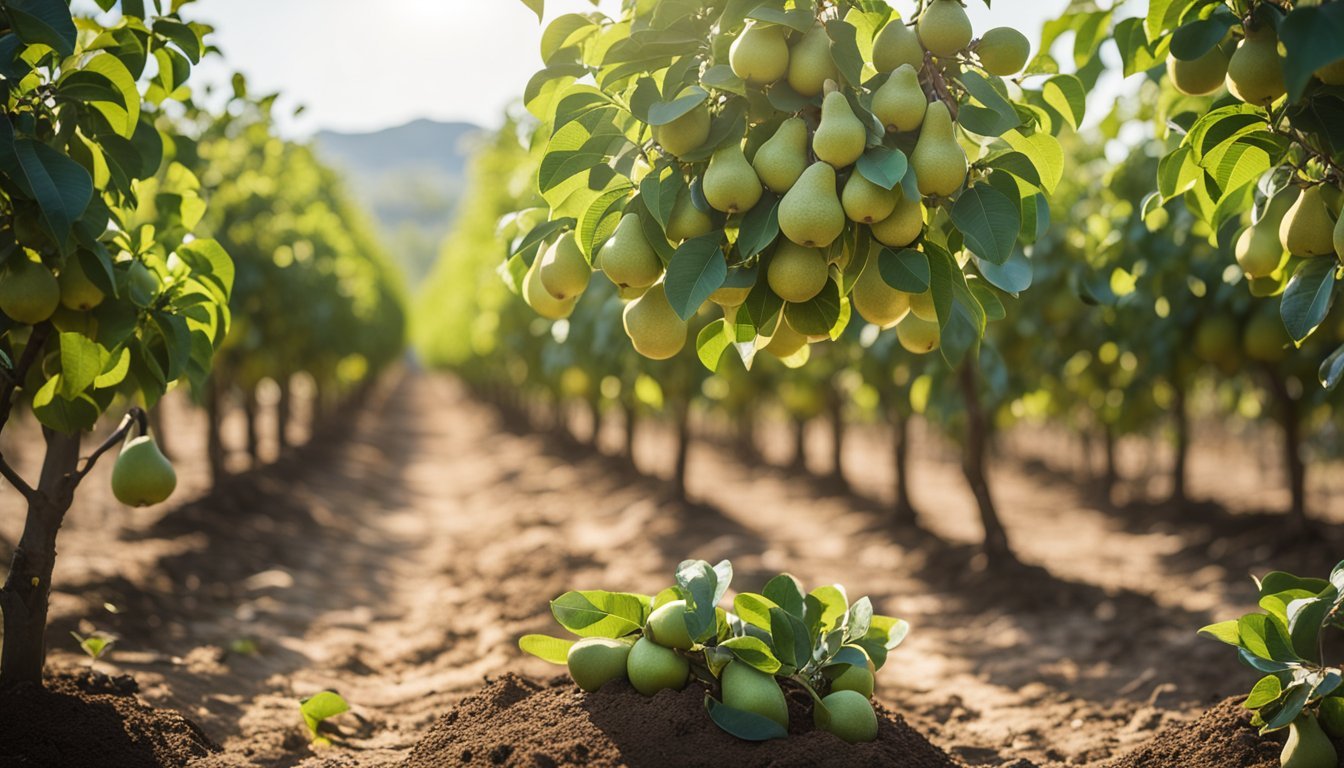
Choosing the Right Location for Your Bosc Pear Trees
Regardless of your choice, ensure the planting location has well-draining soil and receives full sunlight.
Make sure to check for any underground utilities beforehand, along with overhead structures that could impact growth.
A key point to remember is that Bosc pears need cross-pollination.
To produce fruit, they require another pear variety that blooms at a similar time.
Consider planting D’Anjou, Comice, or Corsica pears nearby for optimal pollination.
Common Issues and How to Address Them
Bosc pears, compared to other fruit trees, are relatively resilient.
Nonetheless, they can still face a few challenges regarding pests and diseases.
- Fire Blight
- Codling Moths
Addressing these issues can be tricky.
If you find affected trees, pruning should occur during winter to eliminate the infected branches.
Dispose of the pruned materials responsibly and keep an eye out for any signs of re-infection.
Harvesting Your Bosc Pears
Bosc pears typically ripen from early to mid-fall.
Unlike some fruit types, pears do not ripen while still attached to the tree.
Those that develop softness while hanging will likely be mealy and less enjoyable.
For the best harvest, pick pears when they are mature but not yet fully ripe.
A simple trick: gently support the pear and tilt it upward.
If the stem comes off easily, it’s ready; if not, let it stay on the tree a bit longer.
After harvesting, you can ripen pears at room temperature, which takes about a week.
Once they feel tender at the neck, they are ready to enjoy.
For extended storage, keep them in a cool environment like a refrigerator or cold root cellar, as they can last several months under these conditions.
Source: Epicgardening

